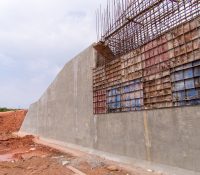When the Walls Come Tumbling Down… Retaining Wall Basics
A wall is really boring until it fails. A retaining wall is supposed to hold back soil to either support a structure or keep a space clear. When it fails, both of those roles are compromised. A retaining wall does not have to collapse to fail. In fact, a failure is perhaps better defined as when the wall does not perform as expected. Read More






